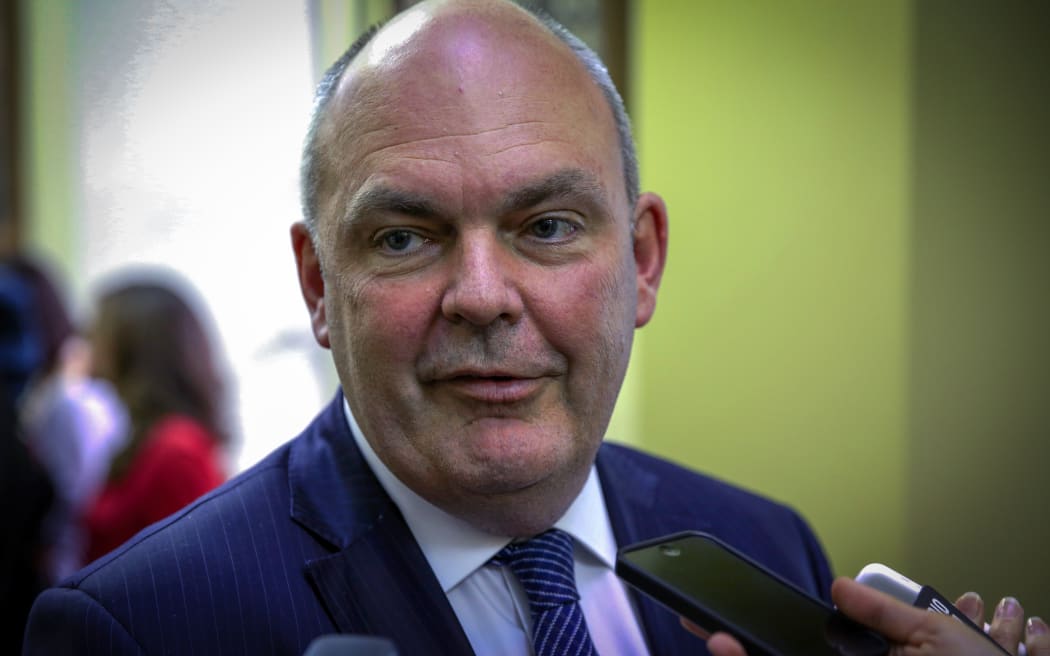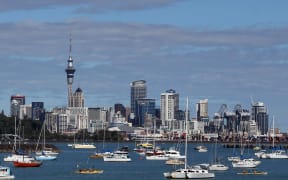The government is celebrating the lowest unemployment figures in almost seven years but Labour and the Greens say workforce participation numbers raise concerns.
A leading economist, meanwhile, said the figures had economists puzzled.

Economic Development Minister Steven Joyce said strong growth in construction was one factor behind the turnaround. Photo: RNZ / Alexander Robertson
The latest figures show unemployment fell sharply in the last quarter of 2015, from 6 percent to 5.3 percent. The latter figure is the lowest unemployment rate since March 2009.
However, the number of people not participating in the labour market grew - with 14,000 people without jobs not looking for work in the last three months of last year.
In the same period, the economy created 21,000 jobs - a solid recovery from the previous quarter's loss of 11,000 jobs.
Economic Development Minister Steven Joyce said the figures were a real tribute to the New Zealand businesses that continued to grow and invest in the economy.
The turnaround caught many by surprise and there were numerous factors behind it, he said.
"Firstly, construction is strong - and that's one of the upsides of the need to build houses, particularly around Auckland, is that's boosting the construction sector while other parts of the country, including Canterbury, stay strong," Mr Joyce said.
"We're seeing big increases in trade and technical professions, which shows some of the strength in some of the engineering-based and technical-based businesses, which is also encouraging."
Mr Joyce said there had also been "significant improvements" in regional areas.
Workforce participation 'something to be concerned about'
ASB chief economist Nick Tuffley said some people seemed to be falling through the cracks in the labour market, at least in the official count.
The figures had economists puzzled, he said, as it was unusual for more people to be opting out of the labour market while unemployment was falling.
"They are either people who are choosing not to work - they may be studying, they may be people staying at home - and some of them may be people who would actually like to work but they aren't quite meeting the criteria for demonstrating they're seeking work hard enough, at least as the survey itself is done."
The drop in the participation rate had helped drive the unemployment rate down, Mr Tuffley said.
Labour market statistics did fluctuate, and he suspected the next quarter would see participation rates edge back up - lifting the unemployment rate.

Mr Robertson said he was concerned about the future of workforce participation. Photo: RNZ / Alexander Robertson
Labour and the Greens were both worried by the growth in the number of people not participating in the workforce.
Labour Party finance spokesman Grant Robertson said while the lower unemployment rate was pleasing, the government still needed to be concerned about the long-term trends.
"It is quite clear that a lot of New Zealanders have actually given up on trying to find work, that's what it means when the participation rate drops three quarters in a row, drops by a percent over the course of the year," Mr Robertson said.
"There are 14,300 fewer people involved in the wider workforce in a quarter - that's something to be concerned about."
Green Party finance spokesperson Julie Anne Genter said it was clear the economy was not working for everyone.
"Today's big drop in unemployment is largely driven by a drop in the participation rate - which is a surprise and is at odds with history," Ms Genter said.
"So it's not clear yet if this means there are actually more people in work. Wage inflation is still very soft, so that means wages are not improving across the board."
Mr Joyce said the participation rate figures needed to be kept in context.
"Even now, after this drop, we have the third highest participation rate in the developed world and also the third highest employment rate in the developed world, so Kiwis are very active in participating in the labour market.
"In terms of the drop that has occurred Stats [Statistics New Zealand] has looked into it and said at least 50 percent of that is people retiring - they reach retirement age and leave the labour market, so that's not something you'd worry about too much."
Statistics New Zealand said employment was particularly strong for 20- to 29-year-olds in 2015, with 26,800 more people in this age group employed over the year.
In Auckland, 23,000 more people were employed in the region over the year - with the construction sector creating many of those new jobs.





